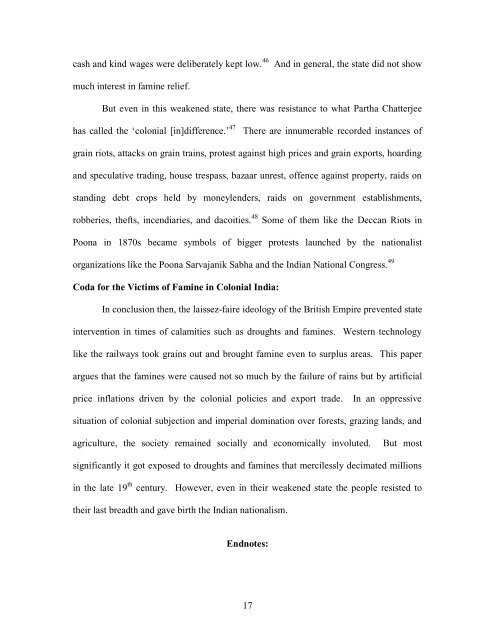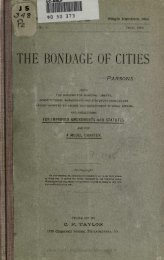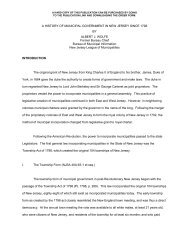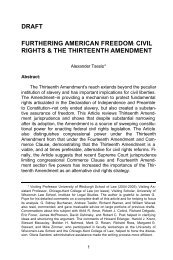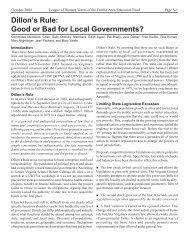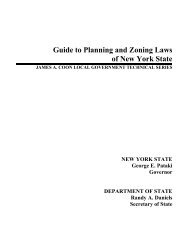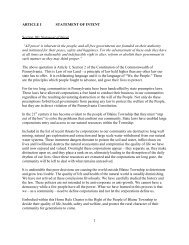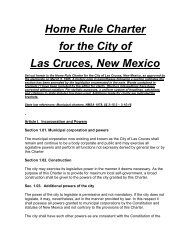The British Empire and Famine in Late 19th Century Central India
The British Empire and Famine in Late 19th Century Central India
The British Empire and Famine in Late 19th Century Central India
You also want an ePaper? Increase the reach of your titles
YUMPU automatically turns print PDFs into web optimized ePapers that Google loves.
cash <strong>and</strong> k<strong>in</strong>d wages were deliberately kept low. 46<br />
And <strong>in</strong> general, the state did not show<br />
much <strong>in</strong>terest <strong>in</strong> fam<strong>in</strong>e relief.<br />
But even <strong>in</strong> this weakened state, there was resistance to what Partha Chatterjee<br />
has called the „colonial [<strong>in</strong>]difference.‟ 47<br />
<strong>The</strong>re are <strong>in</strong>numerable recorded <strong>in</strong>stances of<br />
gra<strong>in</strong> riots, attacks on gra<strong>in</strong> tra<strong>in</strong>s, protest aga<strong>in</strong>st high prices <strong>and</strong> gra<strong>in</strong> exports, hoard<strong>in</strong>g<br />
<strong>and</strong> speculative trad<strong>in</strong>g, house trespass, bazaar unrest, offence aga<strong>in</strong>st property, raids on<br />
st<strong>and</strong><strong>in</strong>g debt crops held by moneylenders, raids on government establishments,<br />
robberies, thefts, <strong>in</strong>cendiaries, <strong>and</strong> dacoities. 48 Some of them like the Deccan Riots <strong>in</strong><br />
Poona <strong>in</strong> 1870s became symbols of bigger protests launched by the nationalist<br />
organizations like the Poona Sarvajanik Sabha <strong>and</strong> the <strong>India</strong>n National Congress. 49<br />
Coda for the Victims of <strong>Fam<strong>in</strong>e</strong> <strong>in</strong> Colonial <strong>India</strong>:<br />
In conclusion then, the laissez-faire ideology of the <strong>British</strong> <strong>Empire</strong> prevented state<br />
<strong>in</strong>tervention <strong>in</strong> times of calamities such as droughts <strong>and</strong> fam<strong>in</strong>es. Western technology<br />
like the railways took gra<strong>in</strong>s out <strong>and</strong> brought fam<strong>in</strong>e even to surplus areas. This paper<br />
argues that the fam<strong>in</strong>es were caused not so much by the failure of ra<strong>in</strong>s but by artificial<br />
price <strong>in</strong>flations driven by the colonial policies <strong>and</strong> export trade.<br />
In an oppressive<br />
situation of colonial subjection <strong>and</strong> imperial dom<strong>in</strong>ation over forests, graz<strong>in</strong>g l<strong>and</strong>s, <strong>and</strong><br />
agriculture, the society rema<strong>in</strong>ed socially <strong>and</strong> economically <strong>in</strong>voluted.<br />
But most<br />
significantly it got exposed to droughts <strong>and</strong> fam<strong>in</strong>es that mercilessly decimated millions<br />
<strong>in</strong> the late 19 th century. However, even <strong>in</strong> their weakened state the people resisted to<br />
their last breadth <strong>and</strong> gave birth the <strong>India</strong>n nationalism.<br />
Endnotes:<br />
17


